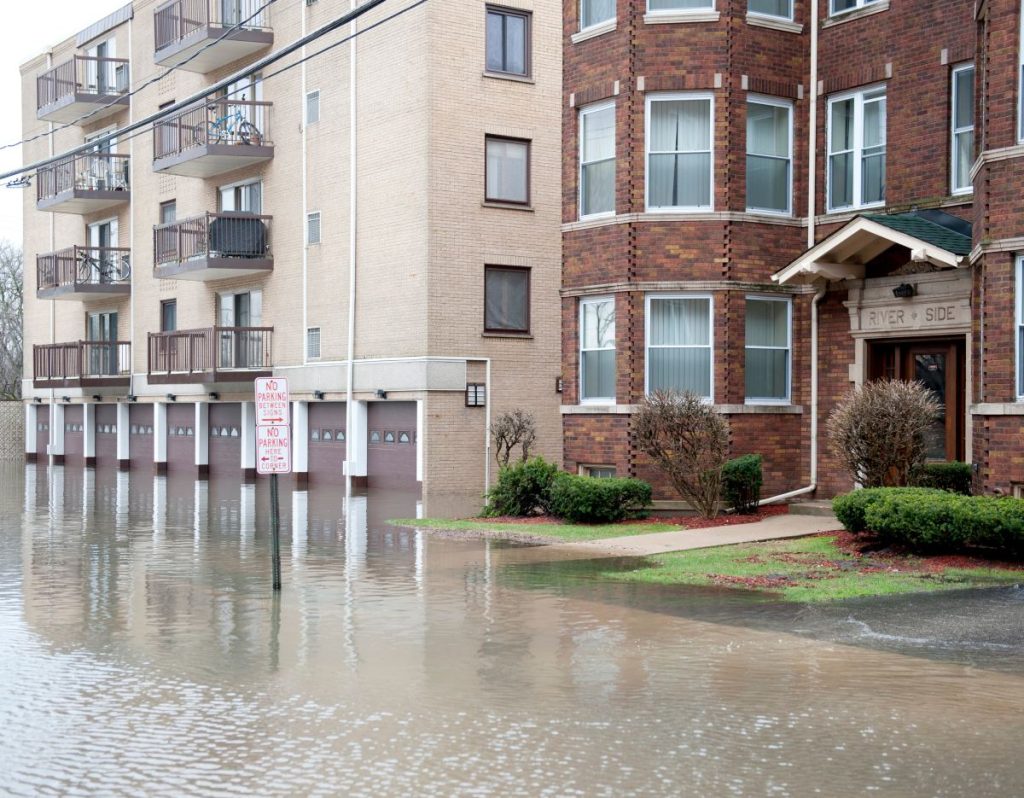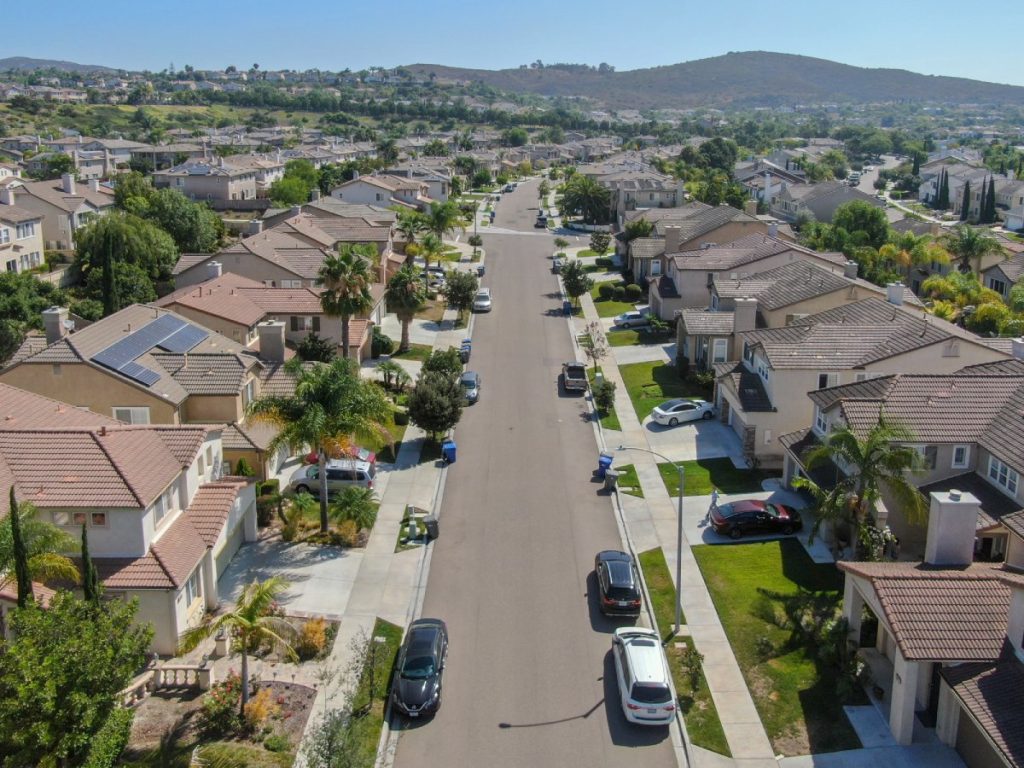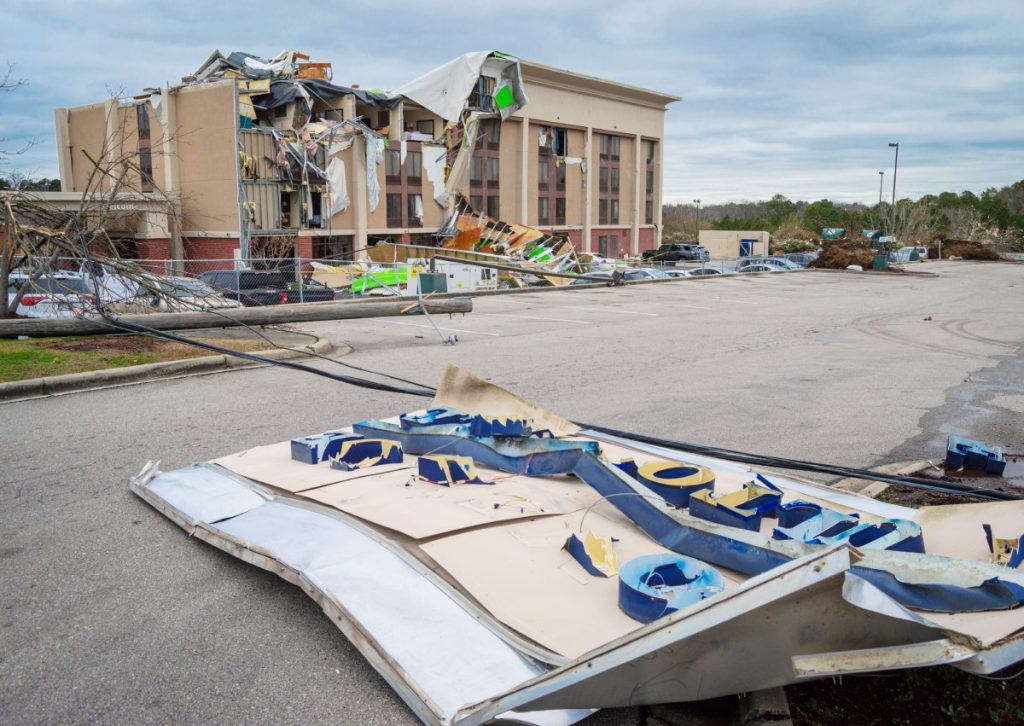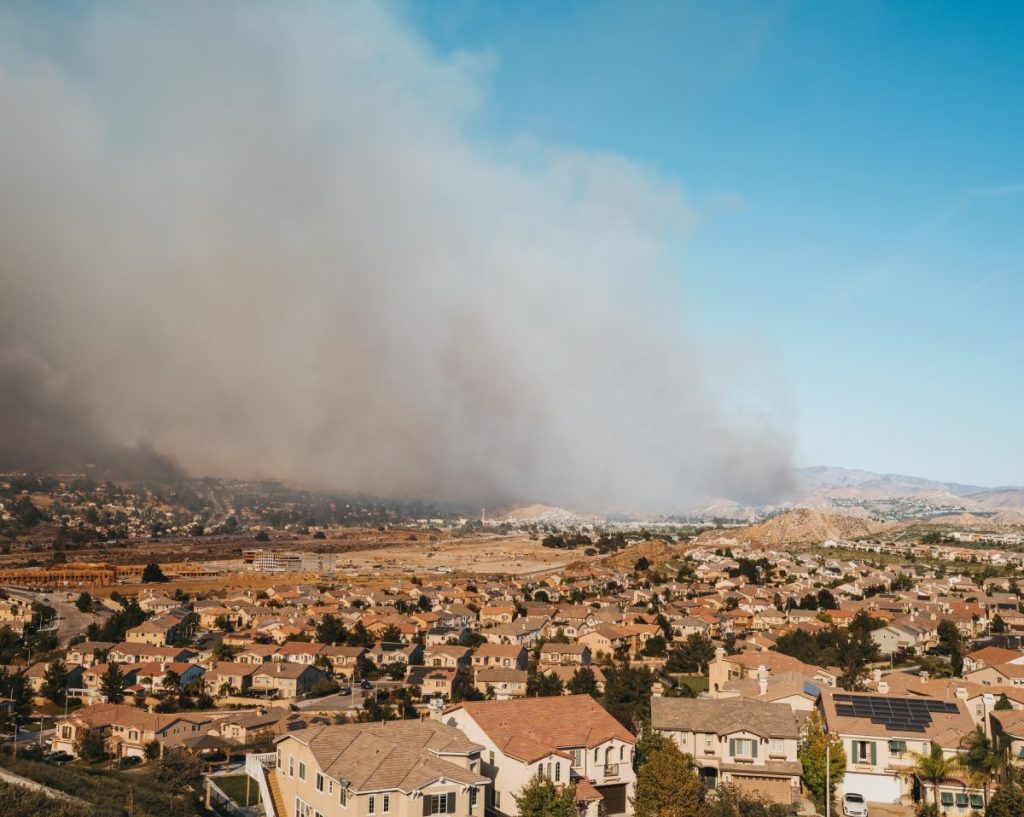Flood insurance for commercial property is a vital tool to protect your business from disaster. But there are lots of things policyholders don’t know about how it works and what it covers. This blog explains commercial flood insurance and offers 5 need to know pieces of advice to remember when you’re purchasing your policy.
What Is Commercial Flood Insurance?
Commercial flood insurance is designed to protect your business—both the physical location and the contents inside—from flood damage. These policies typically aren’t included in general commercial property property insurance and need to be purchased as separate policies, either through a National Flood Insurance Program (NFIP) provider or from a private insurance company.
What Commercial Flood Insurance Covers
Commercial flood insurance includes two types of coverage: one for the physical location where you operate your business (building coverage) and another for the contents within it (personal property coverage). The NFIP’s General Property Form offers commercial policyholders up to $500,000 in building property coverage and up to $500,000 in personal property coverage.
Building coverage typically includes:
- The building’s foundation, walls, staircases, and anchorage systems
- Fuel tanks, well tanks, and pumps
- Plumbing and electrical systems
- Furnaces
- Water heaters
- Windows
- Permanently installed cabinets, paneling, and bookcases
- Permanently installed carpeting
- Appliances
- Solar equipment
Contents coverage typically includes
- Furniture
- Clothing
- Curtains
- Portable and window unit air conditioners
- Carpets not included in building coverage, such as carpeting installed over wood floors
Common Exclusions in Commercial Flood Insurance Policies
While commercial flood insurance can cover a lot, there are some things that are typically excluded from policies. Typical exclusions include:
- Damage from moisture, mildew, or mold
- Sewer or drain backup, unless the backup was caused by flooding
- Items stored outside your building, such as landscaping, fences, or detached signs
- Cars, trucks, and other business vehicles
- Loss of income or profits due to business interruption (see our tips below; you may need separate business interruption insurance to cover that)
- Currency, securities, and important documents like deeds and contracts are usually excluded or have limited coverage
- Property in transit or belonging to customers, vendors, or guests that is left on your premises
How Much Does Commercial Flood Insurance Cost?
The cost of commercial flood insurance varies significantly depending on the riskiness of your location, the size of your property, the extent of your coverage, etc. That said, premiums can range from a few hundred dollars per month to several thousand.
5 Tips To Help Make Sure You’re Covered
After every major flood event, I’m contacted by at least one business or condominium owner owner who suffered flood damage, filed their claim with their NFIP¹ Flood Insurance Company (Allstate, Hartford, Wright Flood, Farmers, FEMA, etc.), and was then told by either the insurance company or the adjuster that their flood insurance policy didn’t cover all of the buildings or structures on the property. The business owners are enraged because they were under the impression that all buildings on the property were covered.
Depending on the circumstances and facts of each case, there may be legal recourse against the agent and/or company who incorrectly procured, wrote, and issued the flood insurance policy. However, it’s better to be safe than sorry, and ensure that your business or commercial property has the proper flood insurance coverage before disaster strikes.
To ensure that your business or commercial property is properly covered with the necessary flood insurance, here are a few important tips to keep in mind obtaining coverage on a NFIP Flood Policy.
1. Only One Building Is Covered Per Policy
This is the big one—many commercial property owners do not realize that the General Property Standard Flood Insurance Policy (SFIP) only covers one building/structure on the property. The General Property SFIP states in bold “Only one building, which you specifically described in the application, may be insured under this policy.”²
This means that if there are multiple buildings or structures on the commercial property that need flood insurance coverage, a separate policy must be put in place for each building structure. Each building structure must have its own flood insurance policy for it to be covered.
2. The NFIP’s Maximum Flood Insurance Coverage for a Commercial Property Is $500,000 Per Building Structure
As mentioned above, the NFIP allows for up to $500,000 in flood insurance coverage for each individually insured building structure, and up to $500,000 in coverage for personal property or business contents within the covered building structure.³
If you believe that your commercial property building(s) need more than $500,000 per building in flood coverage, seek additional flood insurance coverage through a private or excess flood insurance policy.
3. NFIP Flood Insurance Doesn’t Cover Business Interruption
NFIP flood insurance policies do not cover business interruption, lost business profits, etc. If you need or want flood insurance coverage for those damages, contact your insurance agent or broker to help you obtain coverage for those items as related to flood damage.
4. Consider a Scheduled Building Policy
For commercial property owners where the commercial property includes several building structures at one location, a Scheduled Building Policy may be an option for flood insurance coverage.
Scheduled Building Policies aren’t frequently utilized in the NFIP flood insurance realm, but they are available to cover anywhere from two to ten separate building structures under one policy. However, the policy declaration page will be required to designate a specific amount of insurance coverage for each individual building. All buildings must have the same ownership and property location to qualify for this type of policy. I’ve seen these utilized before by school districts.
The policy declarations page(s) will include a list or schedule that delineates each building covered with the amount of insurance coverage for that building.
5. NFIP Isn’t the Only Option for Flood Insurance
Many commercial property owners and homeowners mistakenly believe that their only option for flood insurance coverage is through an NFIP policy (either written by FEMA or a Write-Your-Own (“WYO”) Insurance Company such as Allstate, Hartford, Wright Flood, Farmers, American Bankers, etc.).
Generally, NFIP flood insurance is not the only option, and it is rarely the best option for commercial property. NFIP flood policies provide extremely limited coverage. They don’t cover anything outside the four walls of the building; they are “direct-loss” policies, meaning they only cover damages directly touched by flood waters; and they have very limited recourse in the event the claim is not handled correctly (you can’t sue the adjusters, or seek any damages for their bad behavior). Adjusters have little oversight and little incentive to properly address the claim—there are of course many claims professionals who properly handle claims nonetheless, but there are plenty who do not. Ultimately, many private flood insurance companies offer broader coverage in the event of a flood.
As always, it’s important to know your options and to verify that the flood insurance coverage you need is in fact put in place. We always recommend that you contact a knowledgeable insurance professional to assist you in these matters.
FAQs about Commercial Flood Insurance
Why Is Flood Insurance So Expensive?
If your flood insurance premiums are particularly expensive, the most likely contributing factor is location. High-risk zones like those near coastlines, rivers, or other places with a history of flooding always get charged significant premiums.
But there are other reasons why flood insurance is particularly expensive. Floods can cause catastrophic damage. Unlike a small fire that might damage one room, floods often impact an entire structure and its contents, leading to very costly repairs or even total replacement. And since most flood insurance is purchased through the NFIP, the market for fully private flood insurance is relatively small, meaning there isn’t a lot of competition between insurers to drive down prices.
How Can I Reduce My Commercial Flood Insurance Premiums?
There are a number of different ways you can try to lower the cost of your commercial flood insurance premiums. First off, if you’re building a property or looking for a new one, find one that’s built above Base Flood Elevation (BSE) (i.e., the elevation that flood waters are expected to reach or exceed during a 100-year-flood). You can mitigate risk by elevating critical machinery and equipment (such as HVACs and hot water systems) to a higher floor, installing flood openings in walls to equalize pressure during a flood, and by using flood-resistant materials. You can also choose a policy with a higher deductible; you’ll pay more out of pocket if a flood occurs, but you’ll reduce your monthly premiums.
Can Flood Insurance Only Be Purchased through Private Commercial Insurance Companies?
Commercial property owners and condominium property owners can procure flood insurance through the NFIP or one of its Write-Your-Own (“WYO”) Insurance Companies (Allstate, Hartford, Wright Flood, Farmers, American Bankers, etc.). Unfortunately, NFIP Flood insurance policies have very strict limitations and constraints, as discussed more below, and it may be necessary or preferable for some commercial property owners to purchase additional or supplemental flood insurance coverage through a private flood insurance company or purchase the entire flood insurance coverage through a private flood insurance company.
What Is the FEMA 80% Rule?
FEMA’s 80% rule states that property owners must insure their property for at least 80% of its value, or up to the maximum building coverage limit—that’s $250,000 for homes and $500,000 for commercial property—whichever is less. The value of flood damage is based on either Replacement Cost Value (RCV) or Actual Cash Value (ACV).
What’s the Difference between NFIP and FEMA?
NFIP (the National Flood Insurance Program) is a federal program administered by FEMA (the Federal Emergency Management Agency), but is delivered to the public through a network of over 50 insurance companies (as well as by NFIP Direct).
Further Resources on Insurance Coverage Law
Navigating the complexities of insurance claims can feel overwhelming. Whether you’re facing unpaid claims or simply filing for the first time, our eBooks equip you with the crucial information you need to advocate for yourself with confidence.
- Filing A Property Insurance Claim
- Insurance Company Response Time
- What To Do When You Have a Denied/Underpaid Claim
- Wildfire Claims
- Flood Claims Handbook
- More Information on Hurricane Deductible and Policy Limits
- Condominium Hurricane Preparedness
Why Merlin?
Are you fighting an insurance company that won’t pay up on claims? With nearly 40 years of practice and $2 billion in recovered claims, our team stands by your side to ensure you can face any insurance challenge with confidence. Contact us today for a consultation, or read more about how we’re your trusted advocate.
¹ National Flood Insurance Program (“NFIP”), is a federally backed program, managed by FEMA, that allows qualified property owners to purchase flood insurance coverage: https://www.fema.gov/national-flood-insurance-program.
² General Property Standard Flood Insurance Policy at pp. 2; https://www.fema.gov/sites/default/files/2020-05/F-123_GeneralProperty_SFIP_102015.pdf.
³ National Flood Insurance Program Summary of Coverage



